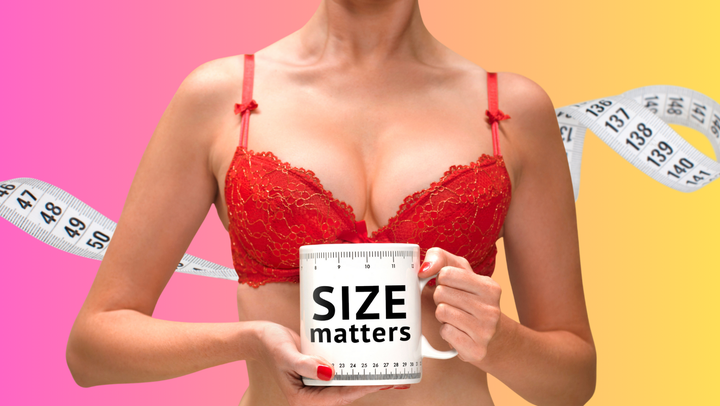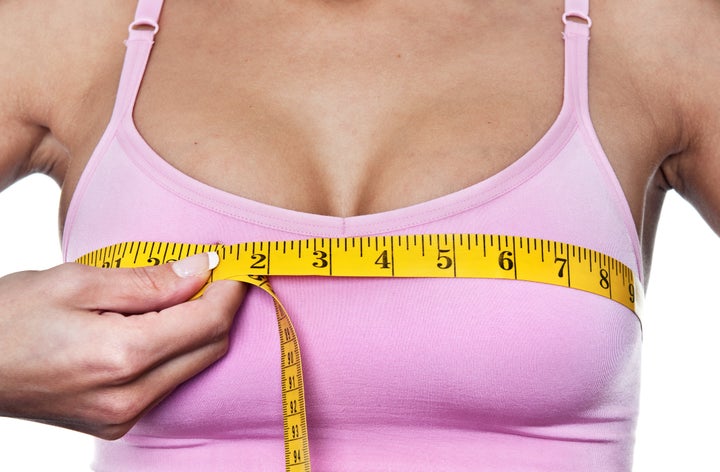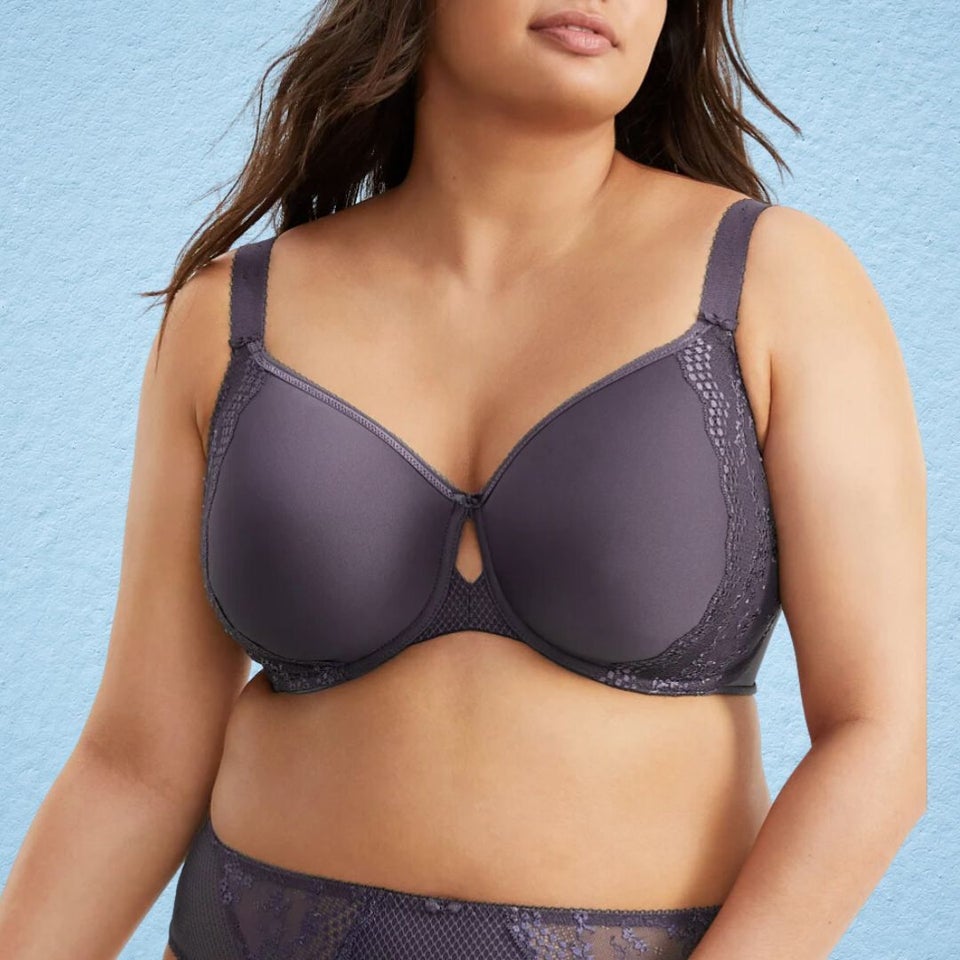
Eighty percent of young women wear the wrong bra size, and experts believe women continue to wear the wrong size throughout their lifetime, according to a 2008 study.
And that the number may be even higher. Jené Luciani Sena, author of “The Bra Book: An Intimate Guide to Finding the Right Bra, Shapewear, Swimsuit, and More” told HuffPost that out of the hundreds of women she has fit for a bra, “I can confidently say 9 out of 10 were in the wrong size.”
Shockingly, bra sizes aren’t standardized.
If every bra in your drawer seems to fit a little differently, it’s not your imagination. Bra sizes are not standardized because they are “the intellectual property of a brand,” explained Stephanie Muhlenfeld, a bra designer who has designed bras for Victoria’s Secret, Nike and other top brands.
This makes it “almost impossible for consumers to find the right fit based on size alone,” she said. Despite this lack of consistent sizing, most women stick with the size of the first bra they find that fits.
Making matters even more complicated is that breast size fluctuates throughout a woman’s lifetime. For some women, breast size also changes throughout their menstrual cycle.
The size of your bra can impact your health.
Wearing the right size bra isn’t just a matter of looks and comfort. Choosing the wrong bra can lead to a host of health issues.
Dr. Paul Banwell, a breast surgeon, explained that “breasts are heavy” and over time, “not wearing the correct bra will affect your posture and may lead to hunching,” in addition to shoulder and back pain.
Dr. Erum N. Ilyas, a dermatologist and functional textile expert, sees the effect poorly fitting bras can have on skin: chafing, skin inflammation, skin tears, bruising, yeast infections, benign skin growths and itching.
Here’s how to find the right bra size.
First of all, there are several signs that you’re wearing the wrong size bra.
Fidgeting with a bra because it is uncomfortable is usually the first sign, Muhlenfeld said. Women wearing bras that don’t fit correctly may also try to pull the underwire away from their breasts or pull their bra band down. Sene added that gaping cups, breast tissue “bubbling out” of a bra and straps sliding down the shoulders are other signs that a bra does not fit well.
To find your bra size at a particular retailer, most experts recommend getting measured by an expert at a department store or lingerie shop. However, you can also measure yourself at home. To do so, you need to take two measurements to find your band size and cup size.
- To find your band size, stylist Michelle Barrett said to measure around your ribcage just under your bust. Take the number you get in inches and round it to the closest whole number. If you get an even number, add four inches. If you get an odd number, add five inches.
- To get your cup size, measure around the fullest part of the bust just above the nipple line. Then, subtract the number you get from your band size. Each inch of difference represents one cup size. If your band size is 36 and your breast measurement is 37, there is a 1-inch difference and you are an A cup. A 2-inch difference would be B cup and so on.

Look for these signs that a bra fits correctly.
“If a bra fits correctly it will fit comfortably around the breast with no pinching or gaps,” Barrett said. “The front of the bra between the breasts should sit flush against the skin and the band should feel comfortable but not dig in.”
Muhlenfeld also recommends pulling at the bra’s band to test fit. “If you can pull your bra band at your side, more than two or three inches,” or can slide more than two fingers under the band, you need to size down.
Sena added that the band should be horizontal across your back and not riding up.
When it comes to checking cup size, Muhlenfeld said “the cup or wire should fit around your breast tissue, not on it ... if the bra wire is sitting on your breast” or breast tissue is spilling out, consider going up a cup size.
To get a good fit, make sure the bra straps are adjusted correctly. You should not be able to pull bra staps more than one inch away from your body, Muhlenfeld advised.
Your bra size may vary from style to style.
While the bra size you currently wear can be used as a guideline, Sena recommends paying closer attention to the “look and feel” of the bra than the size on the label. She said many women spend an hour or more in a store trying on bras to find one that fits, noting that “you could be different sizes in different bras.” If you order online, Sena recommends making sure the vendor has a good return policy.
When selecting bras to try on, Sena said to keep in mind that “band size and cup size work in conjunction with one another, not independently.” She recommends using the concept of “sister sizing,” which means “if you go up a band size you you should go down a cup size” and vice versa. So if you wear a 32D, its sister size would be a 34C.
Comfort should always be the first consideration when buying a bra, Barrett said. “If you do not like underwired, try the foam-shaped options available. If you have sensitive skin, or you are going through menopause, go for natural fabrics like cotton and silk that allow your skin to breathe,” she said.
Banwell added that it’s essential to wear the right bra for the right occasion. Exercising without a supportive sports bra, for example, could lead to pain and stretch marks. Sena recommends convertible bras that can be worn in several different ways.
How often should you reassess your bra size?
Any time a woman gains or loses weight or goes through a life change such as pregnancy or menopause, it’s time to reassess bra fit, Sena said.
Women should also keep an eye on how the bras they have fit. After regular use, all bras will lose their shape and won’t fit as well. Sena recommends reassessing whether a bra still fits well about every six months, although many bras will last much longer.
To prolong the life of a bra, Sena recommends washing bras in cool water with gentle detergents on delicate and laying them out to dry. She also recommends washing bras regularly since dirt, sweat and oils can break down a bra’s fibers more quickly.
